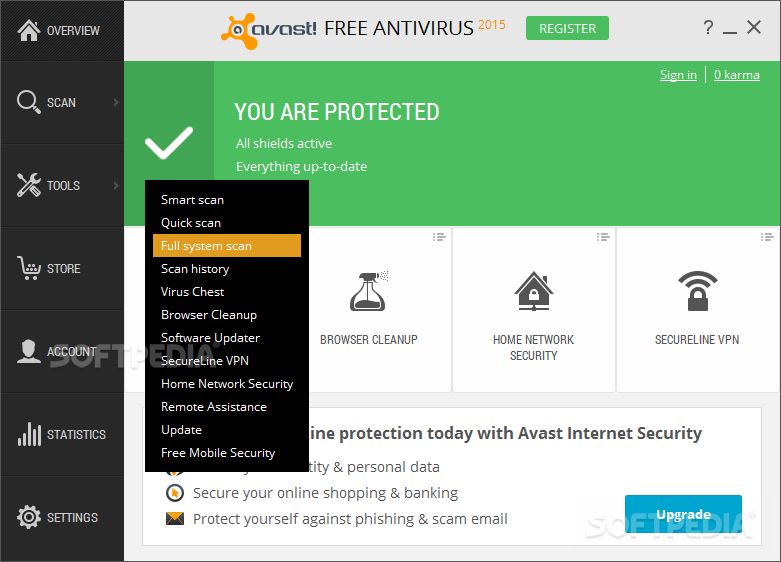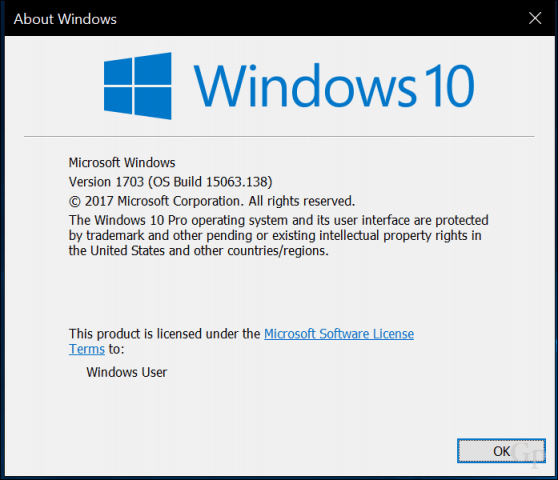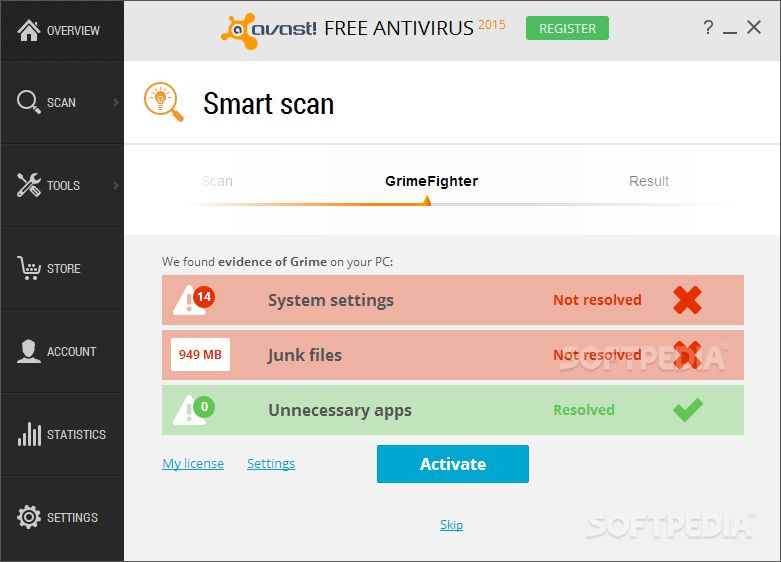The December 2018 cumulative updates are now available for supported versions of Windows 10. Today's update for Windows 10 has addressed the security and non-security issues.
To grab the new updates, open Settings via Start menu or Cortana and navigate to Update & Security -> Windows Update and select Check for updates. If you own multiple PCs or if you would like to patch the PCs manually, you can download and install this update from here.
Build 17763.194 for Windows 10 October 2018 Update
Download V2 Virus Definition Updates (DATs) DAT File Platform Notes. Release Date File Size; 9130xdat.exe Windows-Intel readme.txt.
This update has fixed only one issue associated with Windows Media Player. According to the changelog, this update has fixed an issue where the Seek Bar in Windows Media Player does not work when playing specific files.

The update also includes the general security updates and you can find the full changelog below:
- This update contains improved reliability that affects the update components in Windows 10 version 1507 and Windows 10 version 1511. This update contains files and resources that fix issues that affected the update processes in Windows 10.
- Customers can take advantage of built-in antivirus protection, Windows Defender Antivirus, for Windows 8.1 and Windows 10 devices or a compatible third-party antivirus application. 2018 Microsoft is lifting the AV compatibility check for the March 2018 Windows security updates for supported Windows 10 devices via Windows Update.
- Addresses an issue that may prevent the use of the Seek Bar in Windows Media Player when playing specific files. This issue does not affect normal playback.
- Security updates to Windows Authentication, Microsoft Scripting Engine, Internet Explorer, Windows App Platform and Frameworks, Microsoft Graphics Component, Windows Storage and Filesystems, Windows Wireless Networking, Windows Kernel, Microsoft Edge, and Microsoft Scripting Engine.
At the moment, Microsoft is not aware of any known issues in Windows 10 October 2018 Update's latest patch but the new issues if discovered could be acknowledged a bit later.
Build 17134.471 for Windows 10 April 2018 Update
Windows 10 Aprill 2018 Update patch also brings fix for the Windows Media Player issue and the update also addresses issues with the Start Menu. You can find the changelog below:

- Addresses an issue that may prevent the use of the Seek Bar in Windows Media Player when playing specific files. This issue does not affect normal playback.
- Addresses an issue that may cause some users to see a blue or black screen and receive the error code, “System thread exception not handled.”
- Addresses an issue with Microsoft Intune that causes devices to be incorrectly marked as not compliant because a firewall incorrectly returns a 'Poor' status. As a result, the affected devices will not receive conditional access compliance approval and may be blocked from access to corporate resources such as email.
- Addresses an issue that may cause some custom Start menu layouts to display incorrectly.
- Security updates to Internet Explorer, Microsoft Scripting Engine, Windows App Platform and Frameworks, Microsoft Graphics Component, Microsoft Edge, Windows Storage and Filesystems, Windows Authentication, Windows Wireless Networking, and Windows Kernel.
Known issues in this update
| Symptom | Workaround |
After you install the August Preview of Quality Rollup or September 11, 2018 .NET Framework update, instantiation of SqlConnection can throw an exception. For more information about this issue, see the following article in the Microsoft Knowledge Base: 4470809 SqlConnection instantiation exception on .NET 4.6 and later after August-September 2018 .NET Framework updates. | Microsoft is working on a resolution and will provide an update in an upcoming release. |
| After installing this update, some users cannot pin a web link on the Start menu or the taskbar. | Microsoft is working on a resolution and will provide an update in an upcoming release. |
Build 16299.846 for Windows 10 Fall Creators Update
There is a new patch for those on Windows 10 Fall Creators Update and it comes with similar changes:
- Addresses an issue that may prevent the use of the Seek Bar in Windows Media Player when playing specific files. This issue does not affect normal playback.
- Security updates to Internet Explorer, Microsoft Scripting Engine, Windows App Platform and Frameworks, Microsoft Graphics Component, Microsoft Edge, Windows Kernel, Windows Storage and Filesystems, Windows Wireless Networking, and Windows Authentication.
Known issues in this update
| Symptom | Workaround |
After you install the August Preview of Quality Rollup or September 11, 2018 .NET Framework update, instantiation of SqlConnection can throw an exception. For more information about this issue, see the following article in the Microsoft Knowledge Base: 4470809 SqlConnection instantiation exception on .NET 4.6 and later after August-September 2018 .NET Framework updates. | Microsoft is working on a resolution and will provide an update in an upcoming release. |
Related Articles:
Windows 10 has built-in real-time antivirus named Windows Defender, and it’s actually pretty good. It automatically runs in the background, ensuring all Windows users are protected against viruses and other nasties. Here’s how it works.
RELATED:What’s the Best Antivirus for Windows 10? (Is Windows Defender Good Enough?)
Starting with the Creators Update for Windows 10, Windows Defender’s interface changed a bit, and it was integrated into the new Windows Defender Security Center—which also provides access to security-related tools like family protection, firewall settings, device performance and health reports, and browser security controls. If you haven’t yet updated to the Creators Update, you should still be able to follow along pretty well.
What Is Windows Defender?
Microsoft offered a standalone antivirus app named Microsoft Security Essentials in the days of Windows XP, Vista, and 7. With Windows 8, the product was tidied up a bit, bundled with Windows, and renamed Windows Defender. And it’s pretty good, if something of a mixed bag. It’s true that other antivirus apps—like BitDefender and Kaspersky—protect against more viruses in benchmarks.
But Windows Defender boasts some advantages, too. It’s by far the most non-invasive app, handling things in the background whenever it can and not nagging you all the time. Windows Defender also plays nicer with web browsers and other apps—respecting their security and privacy settings more than most other antivirus apps.
RELATED:How to Run Malwarebytes Alongside Another Antivirus
What you use is up to you, but Windows Defender is not a bad choice (and has overcome most of its problems from a few years back). We do, however, recommend running an anti-malware app like Malwarebytes in addition to whatever antivirus app you choose.
Take Advantage of Automatic Scans and Updates
Like other antivirus apps, Windows Defender automatically runs in the background, scanning files when they’re downloaded, transferred from external drives, and before you open them.
RELATED:Why Does Antivirus Software Quarantine Viruses Instead of Deleting Them?
You don’t really have to think about Windows Defender at all. It will only pop up to inform you when it finds malware. It won’t even ask you what you want to do with the malicious software it finds—it just cleans things up and quarantines the files automatically.
You’ll occasionally see a notification popup to let you know when a scan has been performed, and you can usually see the details of the last scan by opening the Action Center in Windows 10.
If Windows Defender does find a threat, you’ll also see a notification letting you know that it’s taking action to clean those threats—and no action is required from you.
RELATED:You Won’t Be Able to Disable (or Delay) Windows Updates on Windows 10 Home
Antivirus definition updates automatically arrive through Windows Update and are installed like any other system update. These types of updates don’t require rebooting your computer. That way, don’t need to worry about updating Windows Defender, because it’s all handled quietly and automatically in the background.

View Your Scan History and Quarantined Malware
You can view Windows Defender’s scan history anytime you want, and if you’re notified that it has blocked malware, you can view that information too. To fire up the Windows Defender Security Center, just hit Start, type “defender,” and then select “Windows Defender Security Center.”
In the Windows Defender Security Center window, switch to the “Windows Defender” tab (the shield icon) and then click the “Scan history” link.
The “Scan history” screen shows you all current threats, plus information about your last scan. If you want to see the full history of quarantined threats, just click the “See full history” link in that section.
Here, you can see all the threats that Windows Defender has quarantined. To see more about a threat, click the arrow to its right. And to see even more, click the “See details” link that shows up when you expand a particular threat.
RELATED:How To Tell If a Virus Is Actually a False Positive
You don’t really need to do anything else here, but if you didn’t have Windows Defender delete the threat when it was found, you’ll be given the option to do that on this screen. You’ll also be able to restore the item from quarantine, but you should only do this if you’re absolutely sure the detected malware is a false positive. If you’re not absolutely, 100 percent sure, don’t allow it to run.
Perform a Manual Scan
RELATED:Why You Don’t Need to Run Manual Antivirus Scans (And When You Do)
Back on the main “Windows Defender” tab, you can also have Windows Defender run a quick manual scan by clicking the “Quick Scan” button. Typically, you won’t need to bother with this since Windows Defender offers real-time protection and also performs regular automatic scans. However, if you just want to be safe—maybe you just updated your virus definitions—there’s absolutely no harm in running a quick scan.
You can also click the “Advanced scan” link on that screen to run three different types of scans:
- Full scan: The quick scan only scans your memory and common locations. A full scan checks every file and running program. It can easily take an hour or more, so it’s best to do this when you don’t plan on using your PC much.
- Custom scan: A custom scan lets you choose a particular folder to scan. You can also do this by right-clicking any folder on your PC and choose “Scan with Windows Defender” from the context menu.
- Windows Defender Offline scan: Some malware is tough to remove while Windows is running. When you select an offline scan, Windows restarts and runs a scan before Windows loads on the PC.
Configure Virus and Threat Protection Settings
By default, Windows Defender automatically enables real-time protection, cloud-based protection, and sample submission. Real-time protection ensures Windows Defender automatically finds malware by scanning your system in real time. You could disable this for a short period if necessary for performance reasons, but Windows Defender will automatically re-enable real-time protection to keep you safe later. Cloud-based protection and sample submission allow Windows Defender to share information about threats and the actual malware files it detects with Microsoft.
To enabled or disable any of these settings, click the “Virus & threat protection settings” link on the main “Windows Defender” tab.
And then toggle the settings on the screen that appears.
Set Up Exclusions for Certain Folders or Files
If you scroll down the very bottom of that same “Virus & threat protection settings” page, you can also set exclusions—files, folders, file types, or processes that you don’t want Windows Defender to scan. Just click the “Add or remove exclusions” link.
If antivirus is dramatically slowing down a certain app you know is safe by scanning it, creating an exclusion can speed things up again. If you use virtual machines, you might want to exclude those large files from the scanning process. If you have a huge photo or video library that you know is safe, you don’t really want scanning slowing down your editing.
To add an exclusion, click the “Add an exclusion” button, select the type of exclusion you want to add from the dropdown menu, and then point Windows Defender to whatever you want to exclude.
RELATED:Antivirus Slowing Your PC Down? Maybe You Should Use Exclusions
Just be careful to use exclusions sparingly and smartly. Each exclusion you add reduces your PC’s security by a bit, because they tell Windows Defender not to look in certain places.
What if You Install Another Antivirus?
Windows 10 automatically disables Windows Defender if you install another antivirus app. While another antivirus app is installed, Windows Defender won’t continue performing real-time scans, so it won’t interfere with your other app. You can still use Windows Defender to perform a manual—or offline—scan as a backup to your preferred antivirus app, though.
If you ever uninstall the other antivirus, Windows Defender will automatically kick into gear once again and take over, providing antivirus protection.
Do note, however, that certain anti-malware apps—like Malwarebytes—can be installed alongside Windows Defender and both will offer complimentary real-time protection.
Whichever antivirus product you prefer, it’s good that every single new Windows installation going forward will come with at least a baseline built-in antivirus protection. While it may not be perfect, Windows Defender does do a decent job, is minimally intrusive, and—when combined with other safe computing and browsing practices—might just be enough.
READ NEXTWindows 10 Virus Removal
- › How to Migrate Your Nest Account to a Google Account
- › Will Your Favorite iPhone Apps Work on iPad?
- › How to Troubleshoot Web Pages That Won’t Load
- › What’s New in Windows 10’s 19H2 Update, Arriving Fall 2019
- › How to Make Nearly Any Dumb Appliance Smart